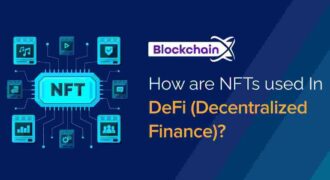The cryptocurrency market, particularly the altcoin sector, has grown exponentially over the past decade, offering investors significant opportunities. However, one of the most pressing challenges today is regulatory uncertainty. Governments worldwide are still shaping policies on crypto trading, taxation, and investor protection, and these regulatory shifts can significantly impact altcoin prices and market dynamics.
For both retail and institutional investors, developing effective strategies in the face of regulatory ambiguity is crucial. By understanding potential risks, diversifying wisely, and staying informed, investors can navigate the complex landscape of altcoin investment while minimizing exposure to sudden market shocks.
Why Regulatory Uncertainty Matters for Altcoins
Altcoins, unlike Bitcoin, often involve smaller market caps, emerging technologies, and novel use cases. These characteristics make them more sensitive to policy decisions:
- Price Volatility
Regulatory announcements or rumors can trigger sharp price swings, especially in smaller altcoins. Markets react quickly to perceived risks, creating opportunities for traders but dangers for uninformed investors. - Liquidity Risks
Restrictions or bans on trading certain tokens can reduce liquidity, making it harder to execute large orders or exit positions without significant slippage. - Project Viability
Some altcoins may fail to comply with new regulations, leading to delistings, suspensions, or legal challenges. This can impact not only token value but also long-term adoption. - Market Sentiment
Even the perception of regulatory pressure can influence investor sentiment, sometimes disproportionately, leading to overreactions in the market.
Key Regulatory Developments to Watch
Investors should monitor global regulatory trends, as these can shape altcoin market behavior:
- United States: The SEC and CFTC continue to evaluate how altcoins should be classified — as securities, commodities, or utility tokens. Their guidance affects token listings, investor protections, and trading rules.
- European Union: The EU’s Markets in Crypto Assets (MiCA) framework aims to standardize regulations across member states, providing clarity for token issuers and exchanges.
- Asia-Pacific: Countries like Japan, Singapore, and South Korea are developing progressive regulations, encouraging adoption while emphasizing investor protection. Conversely, China maintains strict restrictions on cryptocurrency trading.
- Emerging Markets: Africa and Latin America show mixed approaches, with some countries embracing crypto innovation and others imposing restrictive policies. Altcoins targeting these regions must navigate local compliance and cross-border legal considerations.
Altcoin Investment Strategies Amid Uncertainty
1. Diversification Across Asset Classes
One of the most effective ways to mitigate regulatory risk is diversifying across multiple altcoins and even asset classes. A balanced portfolio might include:
- High-cap altcoins with established utility and adoption (e.g., Ethereum, Cardano).
- Promising mid-cap tokens with strong partnerships and ecosystem support.
- Exposure to stablecoins to protect against volatility and hedge regulatory shocks.
Diversification ensures that regulatory changes affecting one token or sector do not devastate the entire portfolio.
2. Focus on Fundamentally Strong Projects
Investors should prioritize altcoins with:
- Clear use cases and utility in real-world applications.
- Transparent teams and governance structures.
- Audited smart contracts and robust security measures.
Fundamentally strong projects are better positioned to adapt to regulatory requirements and survive market disruptions.
3. Stay Informed and Proactive
In a rapidly changing regulatory environment, staying informed is critical:
- Follow announcements from government agencies and major exchanges.
- Monitor global trends in crypto legislation, taxation, and compliance requirements.
- Engage with credible news outlets, research reports, and community updates.
Being proactive allows investors to adjust positions before sudden market reactions.
4. Utilize Stablecoins and Hedging Strategies
Stablecoins like USDC, USDT, and DAI provide a safe harbor during periods of heightened regulatory risk, preserving capital while retaining exposure to the crypto ecosystem.
Additionally, advanced investors may use derivatives, options, and futures contracts to hedge against potential downturns in altcoin prices caused by regulatory news.
5. Gradual Investment and Dollar-Cost Averaging (DCA)
Rather than investing large sums at once, gradual entry through dollar-cost averaging mitigates the risk of buying at peak prices during market hype or panic. DCA smooths volatility, particularly valuable in a sector sensitive to regulatory announcements.
6. Evaluate Exchange Compliance and Safety
Choosing regulated and reputable exchanges reduces exposure to sudden delistings or frozen assets. Exchanges compliant with regional regulations provide:
- Greater legal protection for investors.
- Transparency in token listings and trading activity.
- Reduced risk of sudden operational disruptions.
7. Active vs. Passive Management
Investors may combine active management for high-risk tokens with passive holding of established altcoins. Active management involves monitoring news, regulatory developments, and market signals to react quickly, while passive holding focuses on long-term growth of stable projects.
Case Studies: Regulatory Impact on Altcoins
- Ripple (XRP) and the SEC Lawsuit
In 2020, the SEC filed a lawsuit against Ripple Labs, claiming XRP was an unregistered security. The announcement led to a sharp decline in XRP prices and exchange delistings. Investors with diversified portfolios and stablecoins were better insulated from the impact. - Ethereum and MiCA Compliance
The EU’s regulatory framework encourages compliance for utility tokens. Ethereum-based altcoins integrated with compliant stablecoins or DeFi protocols gained additional investor confidence, demonstrating how clear regulation can positively influence markets. - China’s Crypto Ban
Altcoins targeting Chinese users experienced liquidity constraints and price drops, highlighting the importance of geographic diversification and global market awareness.
Conclusion
Investing in altcoins amid regulatory uncertainty requires a strategic, informed, and cautious approach. By diversifying portfolios, focusing on fundamentally strong projects, leveraging stablecoins, staying informed, and utilizing proper risk management techniques, investors can navigate regulatory turbulence while still capitalizing on the growth potential of the altcoin sector.
Regulations, while sometimes perceived as a hurdle, also offer clarity and long-term legitimacy to the cryptocurrency ecosystem. Investors who adapt quickly, maintain a disciplined approach, and focus on projects with real-world utility are positioned to thrive even in an unpredictable market environment.
In 2025, altcoin investment is as much about resilience and adaptability as it is about spotting high-growth opportunities. Regulatory awareness is no longer optional — it’s a critical component of successful crypto investment strategy.










